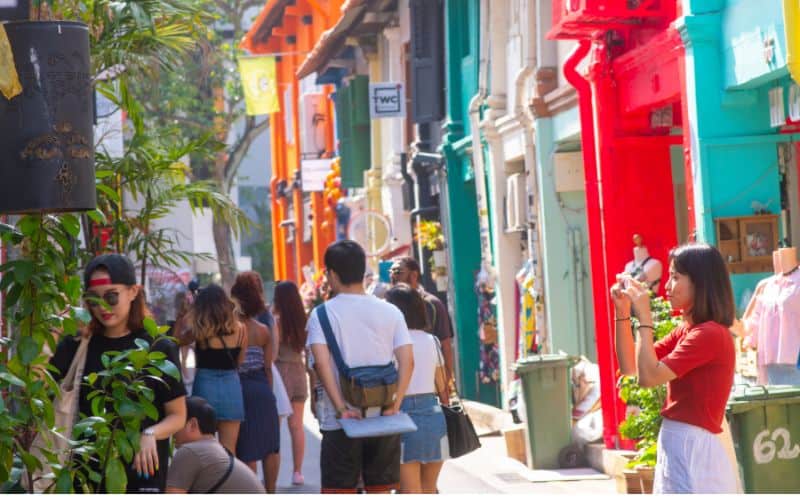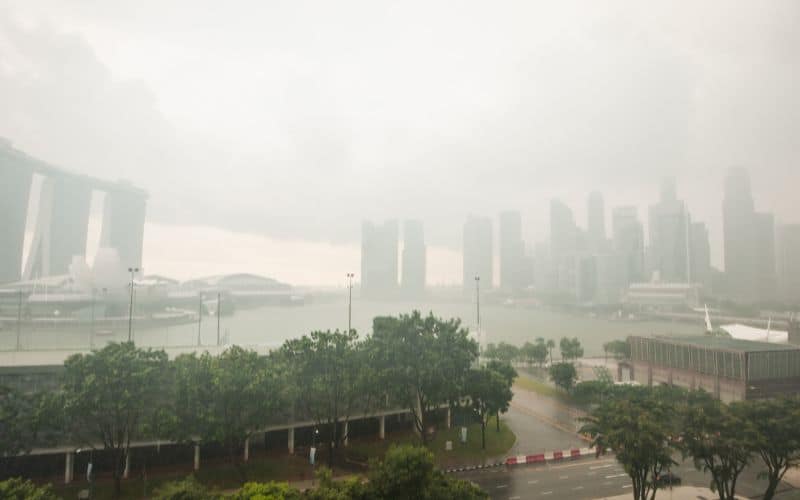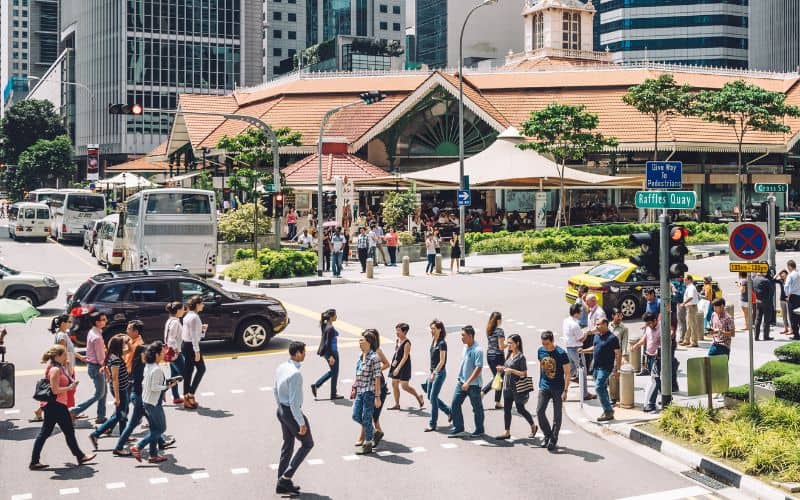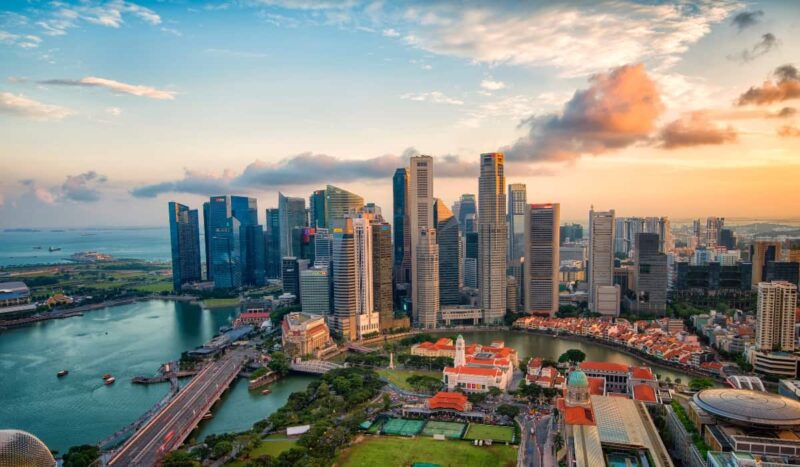Located in the heart of Southeast Asia, Singapore’s climate paints a vivid picture that’s miles away from the seasons experienced in the UK. While the UK boasts four key seasons – spring, summer, autumn and winter – Singapore, with its equatorial location, has a completely different seasonal setup. It’s important to understand the seasons and climate before moving to Singapore, so you know what to expect.
In this blog, we have taken a look at the unique climate of Singapore, uncovering its unique seasonal nuances and exploring how they differ from the familiar weather patterns of the UK.
What to Expect from Singapore’s Seasons

Singapore doesn’t have seasons in the same way that the UK does, so you shouldn’t expect to experience summer, autumn, winter and spring in the same way as you would at home. Singapore’s climate is characterised by its tropical weather, featuring high humidity and consistent temperatures throughout the year. Regardless of the time of year, you can expect Singapore to be warm and humid, and the temperature only changes slightly throughout the year.
Though Singapore doesn’t have the same four seasons that you might be used to, it does have a ‘Dry’ season and a ‘Wet’ season, and these two differ slightly.
Dry Season (June to September)
In Singapore, the dry season typically occurs during the Southwest Monsoon, which lasts from June to September. During this period, Singapore experiences warmer and drier weather compared to the rest of the year.
The southwest winds bring less moisture to the area, resulting in reduced rainfall and more sunshine. However, it’s important to note that even during the dry season, brief showers or thunderstorms can still occur, particularly in the afternoon or evening. Despite these occasional rain showers, the dry season is characterised by generally lower rain levels and higher temperatures. You can expect average temperatures to range from 25°C to 32°C.
Wet Season (December to March)

The wet season in Singapore happens during the Northeast Monsoon, which runs from December to March. This is when Singapore experiences higher rainfall and more frequent thunderstorms. The northeast winds bring moisturised air from the South China Sea and the Pacific Ocean, resulting in increased precipitation.
Rainfall can be heavy at times, and it’s not uncommon for this to lead to flooding in some areas. Temperatures during the wet season generally range from around 23°C to 31°C, remaining relatively warm. It’s worth noting that Singapore’s wet season doesn’t necessarily mean constant rainfall every day. There are still periods of sunshine interspersed with showers and thunderstorms.
In between the two key monsoon seasons, Singapore’s climate is more unpredictable, and weather patterns often change. These transitional periods can bring sudden showers, thunderstorms or short periods of intense rainfall. But, despite these variations, Singapore’s climate remains relatively stable throughout the year, with temperatures consistently warm.
How to Deal with the Weather in Singapore

Dealing with the weather in Singapore – the high humidity and occasional rain showers throughout the year – requires some adjustments, especially if you are moving from the UK.
Stay Hydrated
With the high humidity levels, it’s important to stay hydrated by drinking plenty of water throughout the day. Carry a reusable water bottle with you to ensure you have access to water wherever you go.
Dress Lightly and Wear Breathable Fabrics
Opt for lightweight, breathable clothing made from natural fabrics like cotton or linen. This will help you stay cool and comfortable in Singapore’s warm and humid climate.
Use Sun Protection
Even on cloudy days, UV rays can still penetrate through the clouds. Apply sun cream with a high SPF rating to protect your skin from sunburn and UV damage. Additionally, wear a hat and sunglasses for added protection.
Carry an Umbrella or Raincoat
Be prepared for sudden rain showers by carrying an umbrella or a lightweight raincoat with you when you’re out and about. This will help you stay dry during unexpected downpours. There’s no knowing when it could suddenly rain in Singapore.
Plan Outdoor Activities Wisely
If you have outdoor activities planned, check the weather forecast beforehand and try to schedule them during periods when rain is less likely. Be flexible with your plans and have indoor alternatives in case of unwanted rainfall.
Find Air Conditioned Spaces
Take advantage of air conditioned shopping centres, restaurants or indoor attractions during the hottest parts of the day. This will provide relief from the heat and humidity and allow you to cool down.
Embrace the Rain
Much like living in the UK, living in Singapore does require you to embrace the rain. Instead of letting rain dampen your plans, embrace it as part of the Singaporean experience. Explore indoor attractions such as museums, galleries or indoor markets on rainy days.
Planning Your Move to Singapore

There are a lot of things to think about when you are planning your move to Singapore, but fully understanding the weather and climate is key. After all, you don’t want to move expecting blue skies and sunshine every day, only to be met with more rainfall than you anticipated. By taking the time to fully understand the climate in Singapore, you can relax, knowing exactly what to expect.
Our experienced removals company specialises in seamless transitions to Singapore, ensuring your move is smooth, efficient and stress-free. You can trust our team to provide a personalised service tailored to your needs, so you can focus on settling into your new home and life abroad.
Find out more: https://www.unitedremovals.com/removals-to-singapore/
